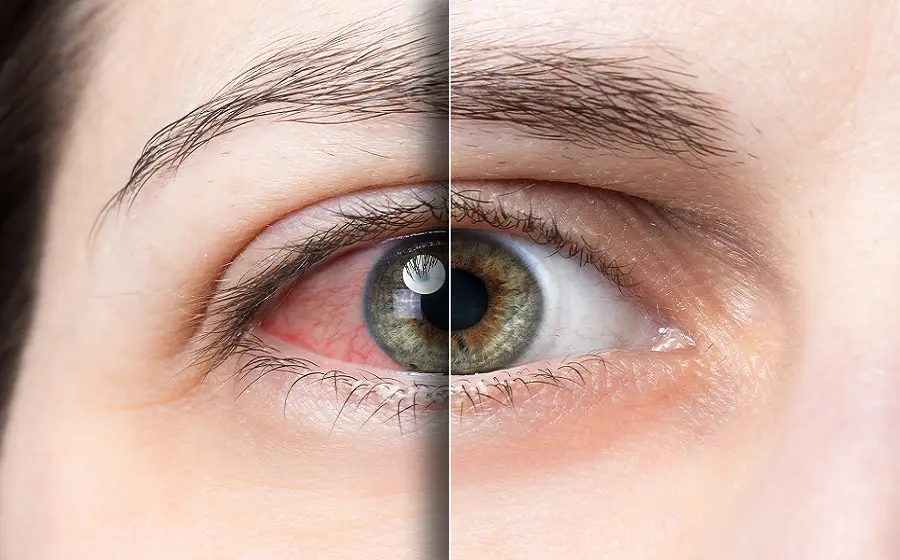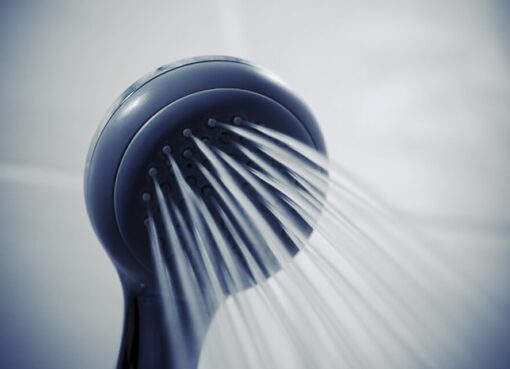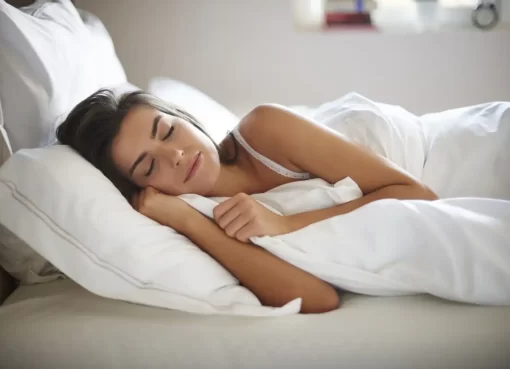Overview
Dry eye disease is a common condition that occurs when your tears aren’t able to provide adequate lubrication for your eyes.
- Tears can be inadequate and unstable for many reasons. For example, dry eyes may occur if you don’t produce enough tears or if you produce poor-quality tears. This tear instability leads to inflammation and damage to the eye’s surface.
- Tears help keep your eyes clean and decrease the risk of developing inflammation in the eyes. Insufficient tears can lead to a stinging, burning, or scratchy sensation in your eyes
- Stringy mucus in or around your eyes
- Sensitivity to light
- Eye redness
- A sensation of having something in your eyes
- Difficulty wearing contact lenses
- Difficulty with nighttime driving
- Watery eyes, which is the body’s response to the irritation of dry eyes
- Blurred vision or eye fatigue
- The feeling of having sand in your eyes
- discomfort when reading or using the computer for long periods
- Heaviness in the eyes
In some cases, severe dry eye may cause:
• corneal ulcers
• scarring
• permanent vision loss
Causes
Dry eyes occur when the healthy tear film is disrupted due to problems with any of its three layers. Tear film dysfunction can result from various reasons, such as:
- Hormone changes
- Autoimmune disease
- Inflamed eyelid glands
- Allergic eye disease
Some people experience dry eyes due to decreased tear production or increased tear evaporation. Decreased tear production can occur due to
- Aging
- Medical conditions
- Certain medications
- Corneal nerve desensitivity caused by contact lens use
- Nerve damage
- Laser eye surgery.
- Increased tear evaporation can be caused by blocked meibomian glands
- Posterior blepharitis
- Blinking less often
- Eyelid problems
- Eye allergies
- Preservatives in eye drops
- Wind, smoke, and dry air
- Vitamin A deficiency
Potential threat
- There are several factors that can increase the likelihood of experiencing dry eyes. These include:
- Advancing age, as tear production tends to decrease with age, making dry eyes more common in those over 50 years old.
- Lack of tears is more frequently observed in women, particularly during times of hormonal changes such as pregnancy, the use of birth control pills, or menopause.
- Having a diet that is deficient in vitamin A (found in liver, carrots, and broccoli) or omega-3 fatty acids (found in fish, walnuts, and vegetable oils).
- Wearing contact lenses or having a history of refractive surgery.
Complications
- Proper tear production is crucial for maintaining healthy eyes. Tears not only lubricate your eyes but also provide a protective barrier against infections. Without enough tears, you may be at an increased risk of developing eye infections.
- Neglecting the treatment of severe dry eyes can lead to various complications such as inflammation, corneal abrasion, corneal ulcers, and even vision loss.
- Dry eyes can be a significant hindrance to daily activities such as reading, writing, or driving. It can cause discomfort, irritation, and even difficulty in focusing on tasks, which can affect the overall quality of life.
Prevention
- Avoid exposing your eyes to air blowing. Refrain from directing air from hair dryers, car heaters, air conditioners, or fans toward your eyes.
- Add moisture to the air in dry indoor environments by using a humidifier during the winter season.
- Consider wearing wraparound sunglasses or protective eyewear with added safety shields to protect your eyes from wind and dry air.
- Take frequent eye breaks during long tasks that require visual concentration by closing your eyes for a few minutes or blinking repeatedly for a few seconds to help spread your tears evenly over your eyes.
- Be mindful of your surroundings and environment. High altitudes, desert areas, and airplanes can be extremely dry, so close your eyes for a few minutes at a time to minimize the evaporation of your tears.
- Position your computer screen below eye level to avoid opening your eyes wider and slowing the evaporation of your tears between eye blinks.
- Quit smoking or avoid smoke as smoke can worsen dry eye symptoms.
- Use artificial tears regularly, even when your eyes feel fine, to keep them well lubricated if you have chronic dry eyes.
Diagnosis
Undergoing a comprehensive eye examination is important to help your eye care specialist identify the underlying cause of your dry eyes. This includes a complete history of your overall health and eye health.
Your eye care specialist may also perform tests to measure the volume and quality of your tears.
- The Schirmer tear test, where blotting strips are placed under your lower eyelids for five minutes to measure tear production, is one option.
- The phenol red thread test, where a thread filled with pH-sensitive dye is placed over the lower eyelid and measured for tear volume after being wet with tears for 15 seconds.
- Special dyes in eye drops can be used to determine the surface condition of your eyes. Your eye care specialist looks for staining patterns on the corneas and measures the time it takes for your tears to evaporate.
- A tear osmolarity test can also be done to measure the composition of particles and water in your tears, as dry eye disease leads to less water in the eyes.
- Lastly, tear samples may be taken to look for markers of dry eye disease, such as elevated matrix metalloproteinase-9 or decreased lactoferrin.
Treatment
To manage occasional or mild dry eye symptoms, most people can use nonprescription eye drops or artificial tears. However, if the symptoms persist or become severe, different treatment options are available based on the underlying cause.
Some treatments aim to address the root cause of dry eyes, while others focus on improving tear quality or preventing rapid tear drainage from the eyes.
Treating an underlying health issue or removing factors that contribute to dry eyes can alleviate the symptoms. For example, if a medication is causing dry eyes, an eye care specialist may suggest an alternative medicine without that side effect.
In cases of eyelid conditions like ectropion (where the eyelids turn outwards), an oculoplastic surgeon specializing in plastic surgery of the eyelids may be consulted by an eye care specialist.
Medication
- Cyclosporine (Restasis) is the most commonly prescribed medication for dry eye syndrome, as it increases tear production and reduces corneal damage.
- Corticosteroid eye drops may be used in severe cases.
- Other options include cholinergics, which stimulate tear production, and switching medications that cause dryness.
- Surgery may be recommended for severe cases, plugging the drainage holes to maintain tear production. Using a humidifier and limiting contact lens wear and screen time.
- Additional treatments include LipiFlow and BlephEx.
Alternate treatments
Other procedures that may be used to treat dry eyes include:
- Your eye care specialist may recommend a treatment to reduce tear loss by closing your tear ducts. The tear ducts, which typically drain tears away, can be partially or completely blocked using silicone plugs or thermal cautery, a more permanent solution that uses heat. This procedure can help keep your tears from leaving your eyes too quickly.
- For those with severe dry eyes, there are special contact lenses available that protect the surface of the eyes and retain moisture. These are called scleral lenses or bandage lenses.
- Clearing blocked oil glands can be achieved through the daily use of warm compresses or eye masks. A thermal pulsation device is also available for unblocking oil glands, but it is yet to be confirmed if this method offers any advantage over warm compresses.
- For individuals experiencing severe dry eyes, a combination of intense pulsed light therapy and eyelid massage may be beneficial.
Home remedies for dry eyes
Making changes to your lifestyle and following home remedies can be helpful in managing dry eyes. These may include frequent washing of your eyelids and using over-the-counter eye drops or other products to lubricate your eyes. In case of a chronic condition, it is recommended to continue using eye drops even when your eyes feel fine to keep them well-lubricated.
Although some people believe that omega-3 fatty acid supplements can be beneficial for individuals with dry eyes, research findings have been inconsistent. In fact, a 2018 study supported by the National Institutes of Health (NIH) found that omega-3 supplements were not more effective than a placebo in treating moderate to severe dry eye.
In cases where environmental factors contribute to dry eyes, adopting certain lifestyle changes may be helpful. For instance, individuals can avoid cigarette smoke and protect their eyes by wearing eyewear during outdoor activities, especially in windy conditions.
Nonprescription products for dry eyes
There are nonprescription products available for dry eyes, such as eye drops, gels, and ointments. Your eye care specialist can recommend the best option for you.
- Preservative drops have a longer shelf life but can cause eye irritation when used more than four times a day.
- Nonpreservative drops are safe for more frequent use and come in single-use vials.
- Eye ointments provide longer-lasting relief but can cloud vision, so they are best used at bedtime. Eye drops can be used at any time without interfering with vision.
Avoid using drops that reduce redness as a solution for dry eyes, as prolonged use can cause irritation. - If environmental factors cause your dry eyes, consider lifestyle changes like avoiding cigarette smoke and wearing protective eyewear during outdoor activities. Using a humidifier at home can also add moisture to the air and reduce dry eyes.
- Artificial tears can control mild dry eye symptoms and can be used once or several times a day.
- When selecting a nonprescription product, prefer the use of non-preservative over preservative drops.
Washing your eyes
To relieve eyelid inflammation and oil blockage that may lead to conditions such as blepharitis, it may be helpful to frequently and gently wash your eyelids. Here are the steps:
- Apply a warm washcloth to your eyes. Wet a clean cloth with warm water and hold it over your eyes for about five minutes. Re-wet the cloth with warm water as needed.
- Gently rub the washcloth over your eyelids, including the base of the eyelashes, to loosen any debris.
- Use mild soap on your eyelids. Baby shampoo or other mild soap can be used. Put the cleanser on your fingertips and gently massage your closed eyes near the base of your eyelashes. Rinse your eyes completely.
Citation
https://shorturl.at/lmTX2
https://www.aao.org/eye-health/diseases/what-is-dry-eye
Featured photo: https://tinyurl.com/ytzytb4n





3 thoughts on “Dry Eyes Explained: Your Ultimate Guide to Relief and Prevention!”